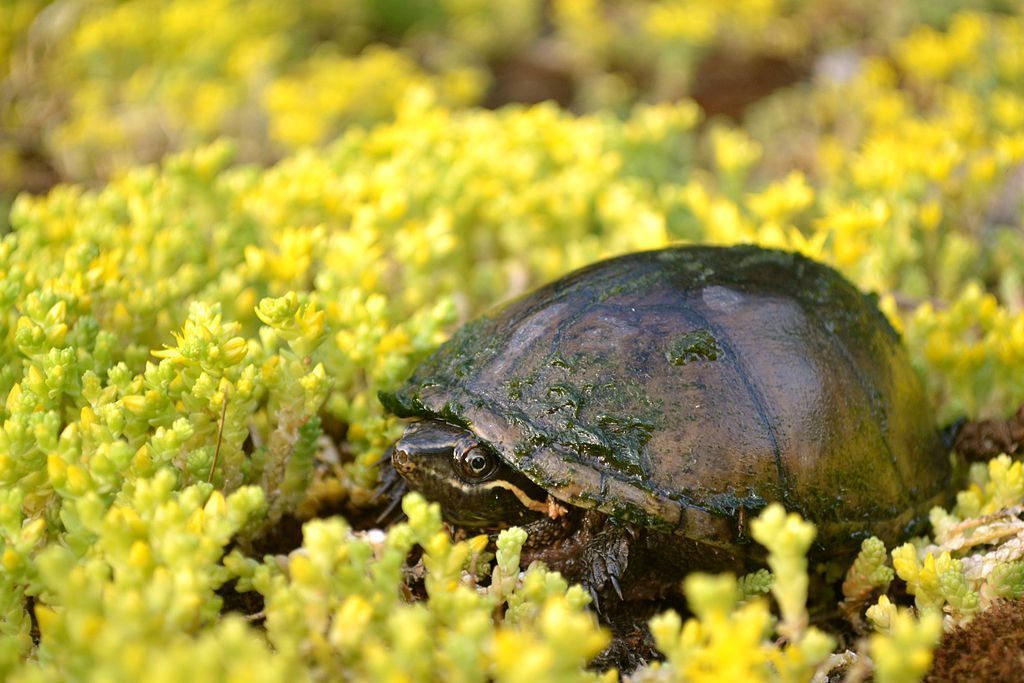
Musk Turtle Care Guide

Musk turtles have brown, domed shells with a keel down the center that’s very noticeable in young specimens. The plastron is small and might put you in mind of a snapping turtle. The head is rather outsized, dark, with yellow stripes from the snout, down the face and to the neck.
Habitat
The checklist for the habitat is a 20 gallon tank with a submersible water filter for one turtle. If you’re thinking of two, you’ll need a 40 gallon tank. However, you should know that two musk turtles in a tank often don’t get along. Two males fight each other, males harass females and females will bite them back.
The water should be free of chlorine and just deep enough for your pet’s feet to touch bottom and for it to poke its head out of the water to breathe. It shouldn’t be so deep that the animal has to paddle all the time. The water temperature should be kept in the low to high 70s.
Musk turtles are aquatic and like to stay in the water, but there should be a place for them to haul out if they feel like it. Because of this, a basking light should be on the checklist and focused on the spot where the little reptile might want to warm up. Ideally, the basking spot should be around 90 degrees Fahrenheit. You should also buy ultraviolet B lightbulbs to help them keep up their store of calcium, vitamin A and vitamin D3.
The bottom of the aquarium doesn’t really need a substrate, but aquarium gravel makes the habitat look esthetically pleasing.
Food
Musk turtles eat small mollusks, fresh water crustaceans, tadpoles, insects and the aquatic larvae of dragonflies and damselflies. They also munch on aquatic vegetation such as duckweed. In captivity, they eat shrimp and fish that’s been cut into bite-sized pieces, bloodworms, earthworms, crickets and pellets made for turtles.
Personality
Though it’s a pretty beast, musk turtles can bite if they don’t want to be handled. It’s best to pick them up near back of the carapace, but remember that they have a surprisingly long and flexible neck and can reach behind then to deliver a bite. Then, there’s that musk. But it’s worth it to care for this fascinating animal.

